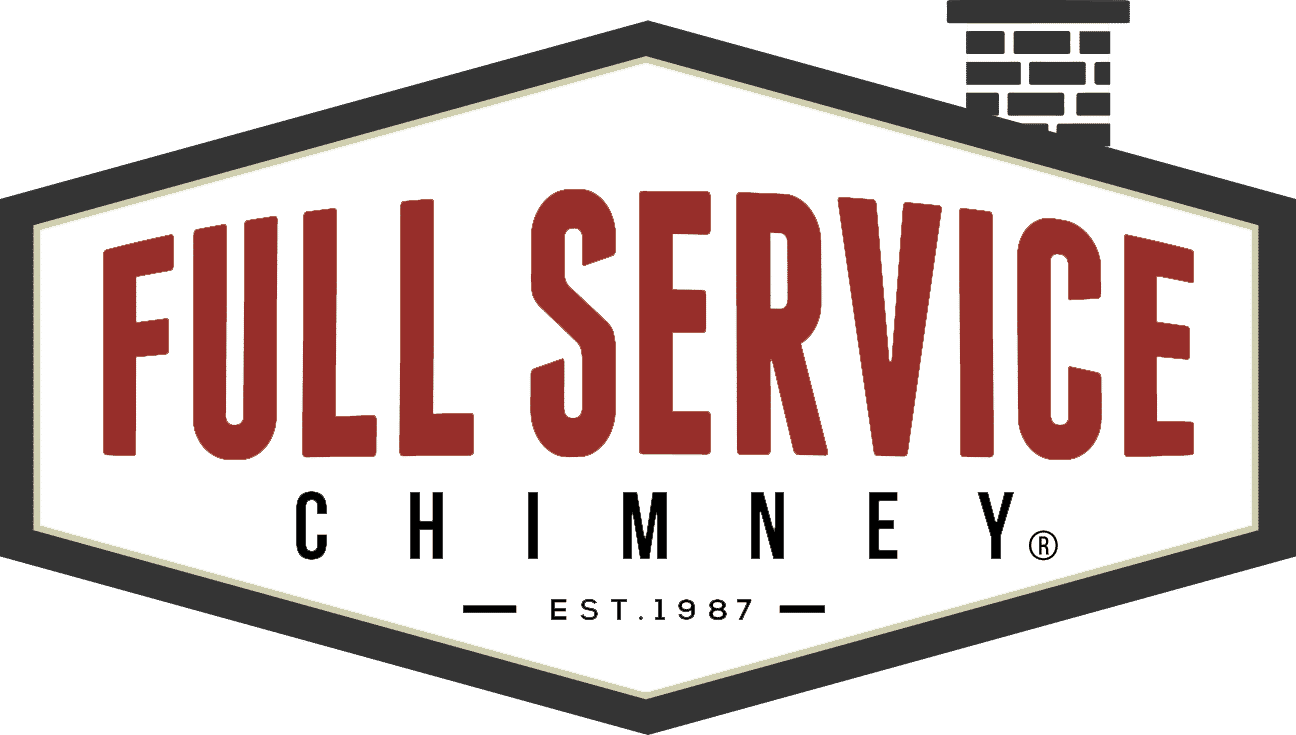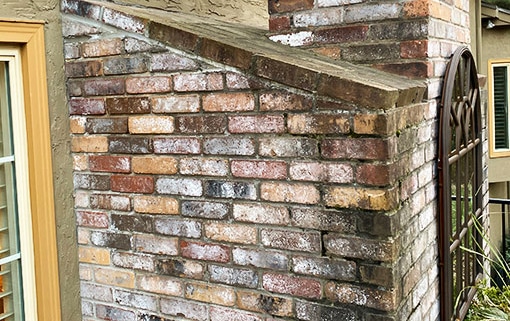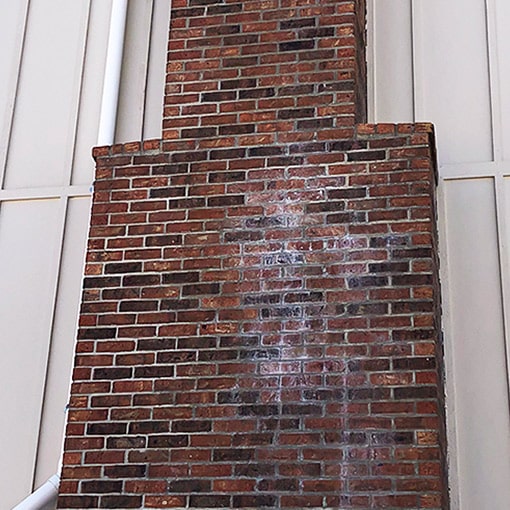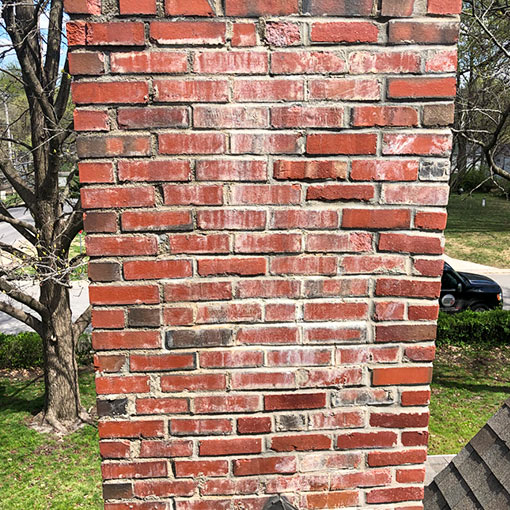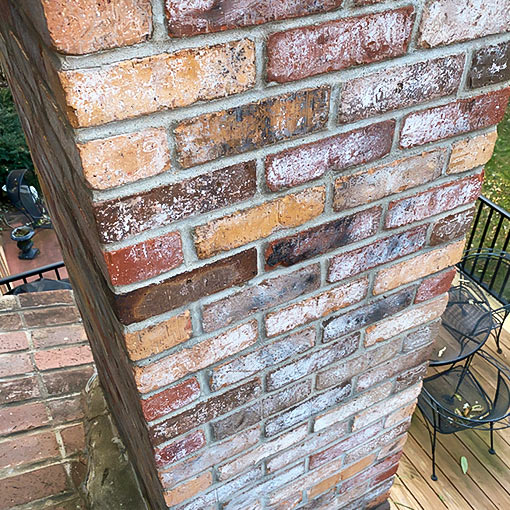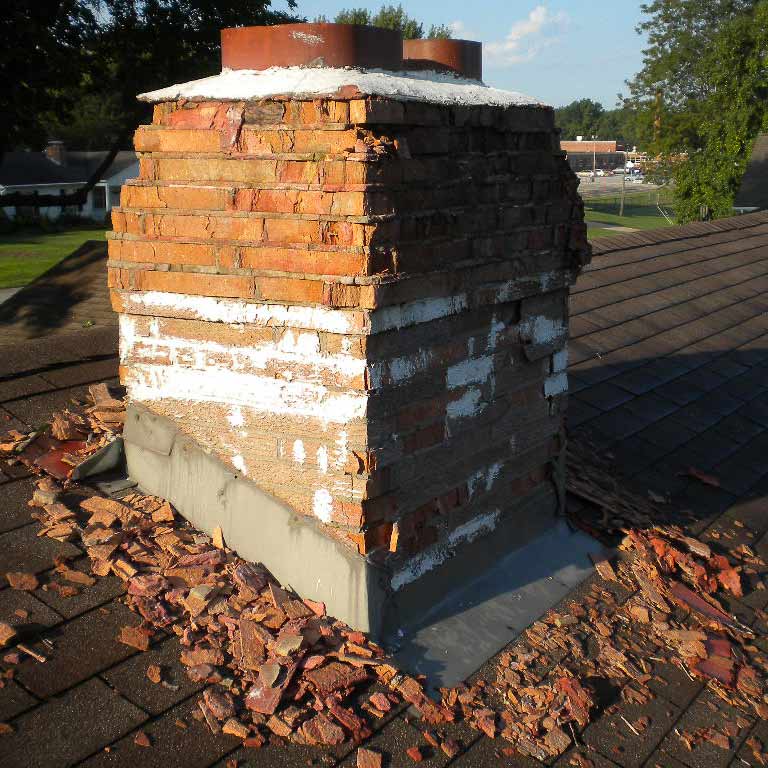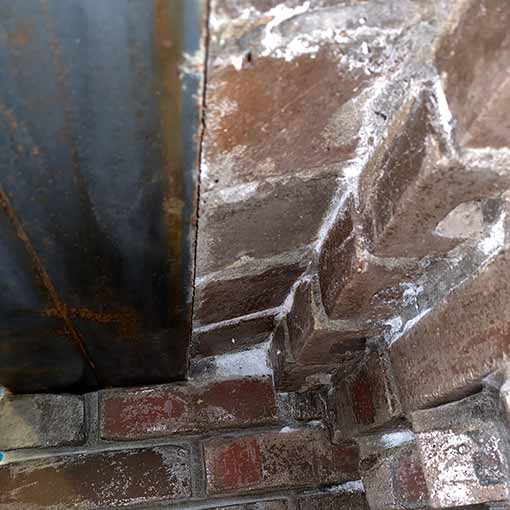If you’ve ever seen white stuff on your chimney, chances are it’s a natural substance called efflorescence. Which is a salt deposit caused by rising moisture. In this post, we explain how to clean it off with 3 Ways to Remove Efflorescence.
But first, how does efflorescence form?
Here’s How it Happens:
When water gets inside a brick’s pores (tiny fissures or hairline cracks), the salt substance evaporates out from inside then rises to the surface. Leaving behind a salty white-colored powder. It can happen to other unsealed porous surfaces like cement blocks, clay, lime, sand, trims, or backings. The efflorescent salts can also be found on your basement walls or anywhere dampness exists.
In our case, these powdery white spots are commonly found on the outer walls of brick and mortar chimneys.
Now let’s learn how to remove these salt deposits from your masonry surfaces.
Suggested Reading: If you’re searching for more in-depth information on this topic check out our post on identifying different causes of chimney staining by color and textures.
How to Clean Efflorescence
You can try to use a stiff brush or broom to clean the efflorescent salts, but it may only get you so far. If it’s a fairly new occurrence and the crystallization hasn’t been there long, then it may come off easily.
Especially in the case when it happens after a melting ice or snow, etc. After brushing it off, your other options are to rinse it with water, rub it or sand it off with an abrasive, or treat it with a chemical solution.
However, if the deposits cover a large area… OR the salt stains are not coming off…
OR you’ve cleaned it before and it keeps coming back, then it is signaling to an internal moisture problem and your chimney needs repairing.
Example images shows white salt efflorescence on the side of a homes brick masonry chimney
Caution:
This post is for informational purposes. Even if you’re trained in roof safety and already own the appropriate (PPE) Personal Protective Gear, it’s still advised to consult a professional before starting any repairs.
Top 3 Ways to Remove the White Stuff from Your Chimney
- Power Wash
- Abrasives
- Chemicals
1. Power Washing
We get this question a lot:
“Can’t we just power wash it?” Yes, you can certainly try.
However, spraying efflorescent deposits with a power washer is the least effective way to remove the white stains from your brick and mortar. If you attempt to wash efflorescence off with a light-powered hose, be careful of the high-pressure spray, which can do more damage to the surface.
Not to mention using a power washer on the roof is not the best idea! It’s a fall hazard and should be handled only by certified professionals with proper safety gear.
Let's think about it:
If the chimney issue we’re trying to get rid of is caused by water… will adding more water help solve the problem? We think not.
Example image shows other damage that’s started to erode the brick. So removing the efflorescence won’t solve the problem.
2. Using Abrasives
You could try rubbing off the salt by hand using an abrasive material or an oscillating/rotary tool or a small sandblaster. All of which might be effective but at the risk of damaging the surface.
Protecting brickwork is especially important. Any damages done during the cleaning process become a new problem that didn’t exist before!
Note: If the abrasives method is successful, then the porous surface MUST be sealed properly to prevent future damage from happening. Scraping, scrubbing, or sanding off the white salt deposits will NOT stop water from getting inside the mortar joints; therefore, your problem still exists and potentially made it worse.
3. Using Chemical Products
Chemical treatments are available such as Muriatic Acid, but there are some severe downsides, and we caution against using it for a few reasons:
- Muriatic Acid is Highly Toxic
- The acid will cause ANY metal in the area to rust
- It’s Less than 100% Effective
Precautions
We do not recommend using chemicals to remove the efflorescent stains from your home or chimney. The health and storage issues alone cause homeowners more problems than it solves.
Why?
Most importantly, it’s a safety hazard for your personal health well-being and that of your family.
When using a chemical treatment like Muriatic Acid to clean brick it’s essential to use only the exact amount needed. If this product MUST be used, then it needs stored outside. Even then, you’ll risk causing any metal objects in the surrounding area to start rusting.
Then you’ll have two problems to solve, instead of just the one! Do yourself a favor and call a local certified professional to solve the root of the problem.
Should You Worry About Efflorescence?
Here’s the thing about efflorescence appearing on your chimney or brickwork.
Sometimes it’s just a cosmetic issue that at most isn’t pretty to look at. Which may or may not be too big of a deal for homeowners. The concern however is that you won’t know for sure if your salty white staining is superficial (only on the surface) – or – caused by water getting inside the bricks and doing damage.
After removal, use a Sealant to help prevent the efflorescent salt deposits from forming.
Sealing your brickwork with a moisture protectant can help prevent white spots AND spalling on your chimney.
If you DO have a more significant (underlying) water problem with your chimney, this efflorescence is your warning sign!
If your efflorescence is a water penetration problem, it can eventually result in spalling bricks. Trust us you definitely DO NOT want that problem!
Be proactive by staying up to date on your annual maintenance.
Summary
In closing, there are a few ways to remove the white salt deposits on your chimney known as efflorescence. To say which is better is or worse is dependent on the situation, since some homes may be affected worse than others.
One thing is certain, NONE of the cleaning methods described will make it go away permanently. Until the leak, condensation, or other underlying issues causing the damp conditions are fixed, then this problem will return.
You may be interested in these Related Posts:
